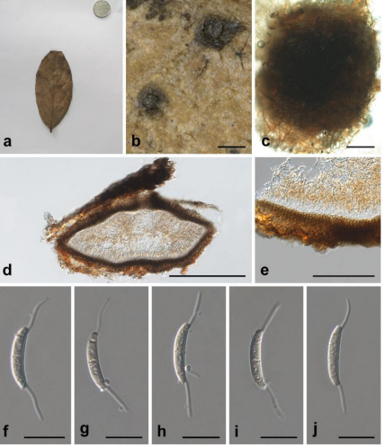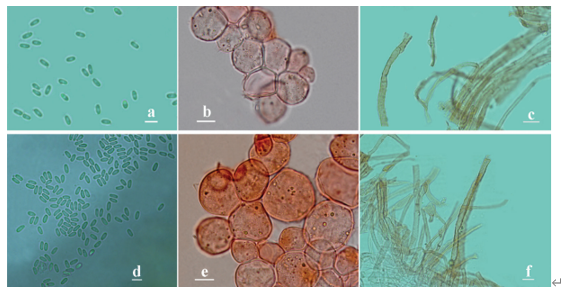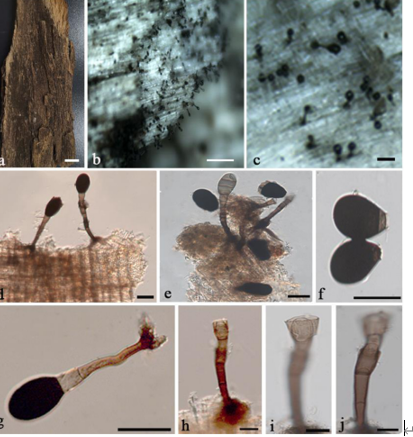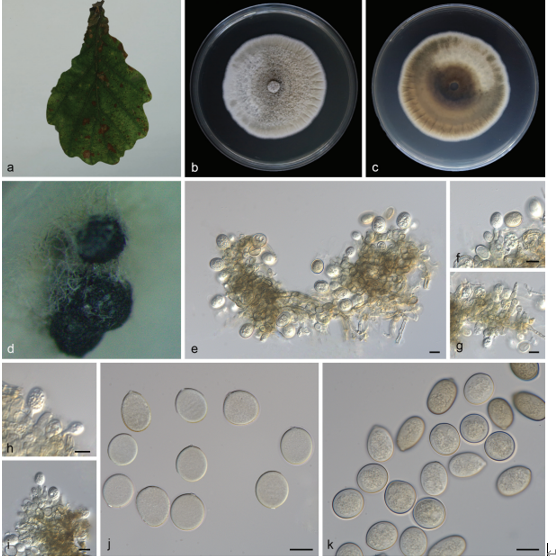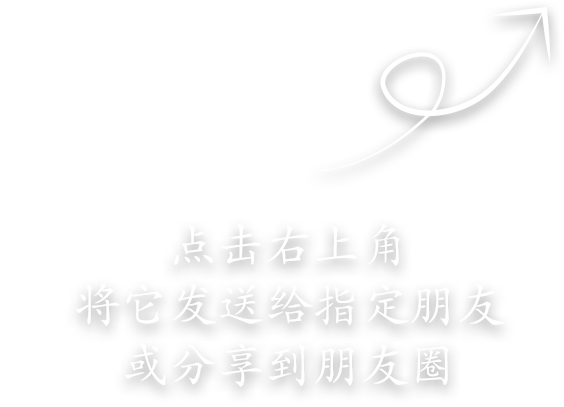Agaricus subumbonatus R.L. Zhao & B. Cao, sp. nov. 2020
Fungal Names: FN 570673
Holotype: CHINA. YUNNAN: Puer, Wuliang Mountain, scattered on ground in broadleaf forest, 3 Jul 2012, Ruilin Zhao ZRL2012030 (holotype HMAS 273931).
Morphological description
Pileus 45–120 mm wide, hemispherical or convex with slightly subumbonate, finally applanate with uplifted margin; surface dry, white, smooth or light orange, fibrillose squamulose in age; edge slightly exceeding. Lamellae free, up to 6 mm broad, crowded, with intercalated lamellulae, at first pink or pinkish brown, finally dark brown to almost black. Stipe 52–95 × 5–20 mm, cylindrical to slightly clavate, hollow, surface smooth and white above the annulus, squamulose- floccose, white to light brown below the annulus, becoming yellowish when bruised. Annulus superior, membranous, fragile and attached at the margin of pileus or entirely at the stipe, smooth, white on the upper surface and floccose, white or light orange on the lower surface. Context white when exposed. Odor of almond. KOH reaction yellow; Schäffer’s reaction reddish orange on pileus and stipe.
Basidiospores (5–)5.5–6.5(–7) × 3.5–4.5 μm [x¯= 5.9 × 4 μm, Q = (1.3–)1.4–1.6(–1.8), Qm = 1.5, n = 30], ellipsoid or ovoid, smooth, thick-walled, brown. Basidia 13–19.5 × 5–8 μm, 4-spored, clavate or slightly truncate at the apex, hyaline, smooth. Cheilocystidia 10.5–20 × 4–10 μm, hyaline, simple or sometimes catenulate, consisting of globose, clavate, or broadly ellipsoid elements. Pileipellis a cutis of cylindrical hyphae, 3–13.5 μm wide, not or slightly constricted at septa hyaline.
Habitat: on ground in broadleaf forest.
Distribution: southwest China.
GenBank Accession: ITS KT951364; 28S KT951455; tef1 KT951628
Notes: Agaricus subumbonatus is represented by four specimens from Yunnan in southwest China in a well- supported clade (99/1.0 BS/PP) (FIG. 1).
Reference: Bin Cao , Mao-Qiang He , Zhi-Lin Ling et al. (2020): A revision of Agaricus section Arvenses with nine new species from China.
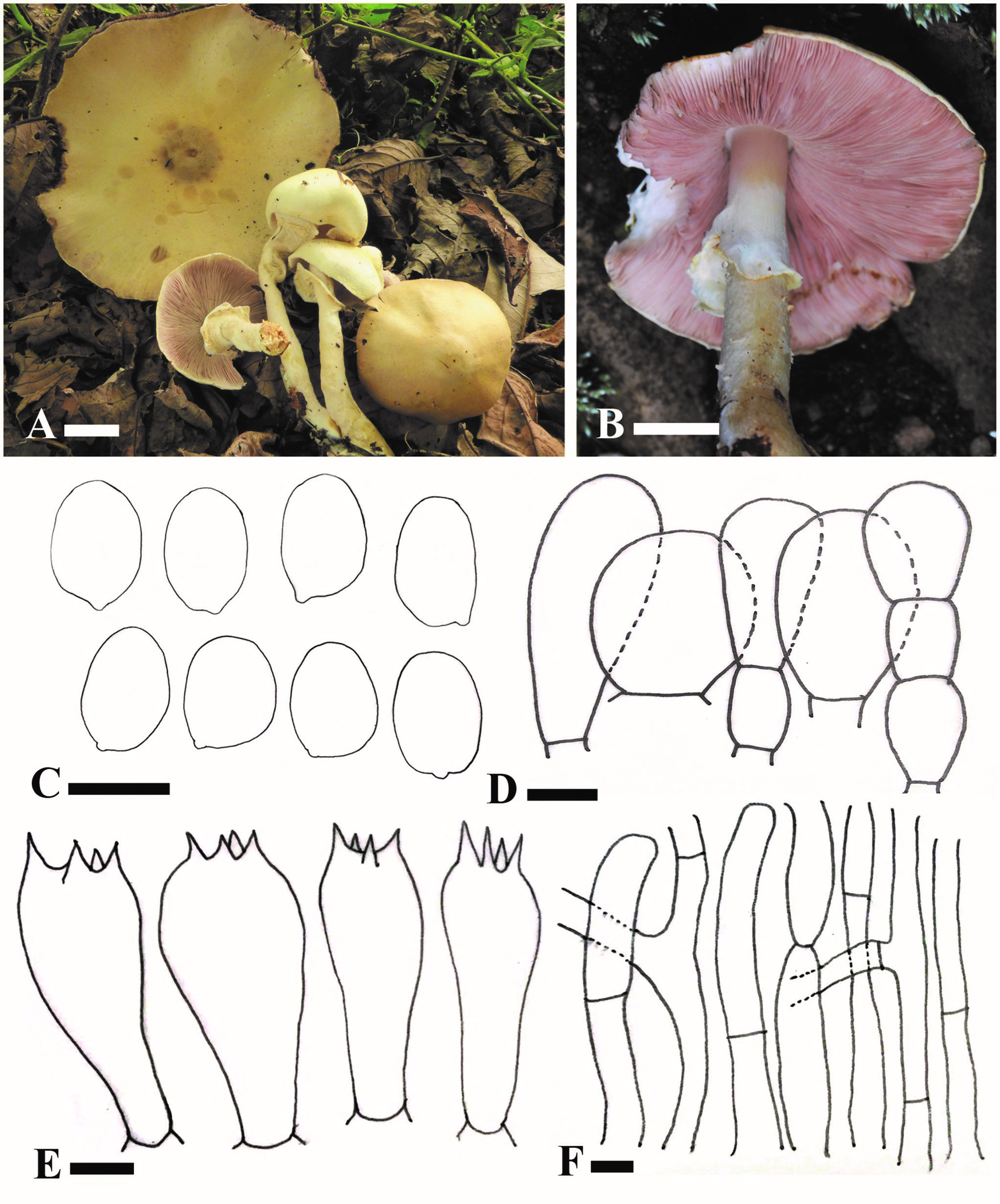
Agaricus subumbonatus (ZRL2012030, holotype). A, B. Basidiomes. C. Basidiospores. D. Cheilocystidia. E. Basidia. F. Pileipellis hyphae. Bars: A, B = 2 cm; C–F = 5 μm.


